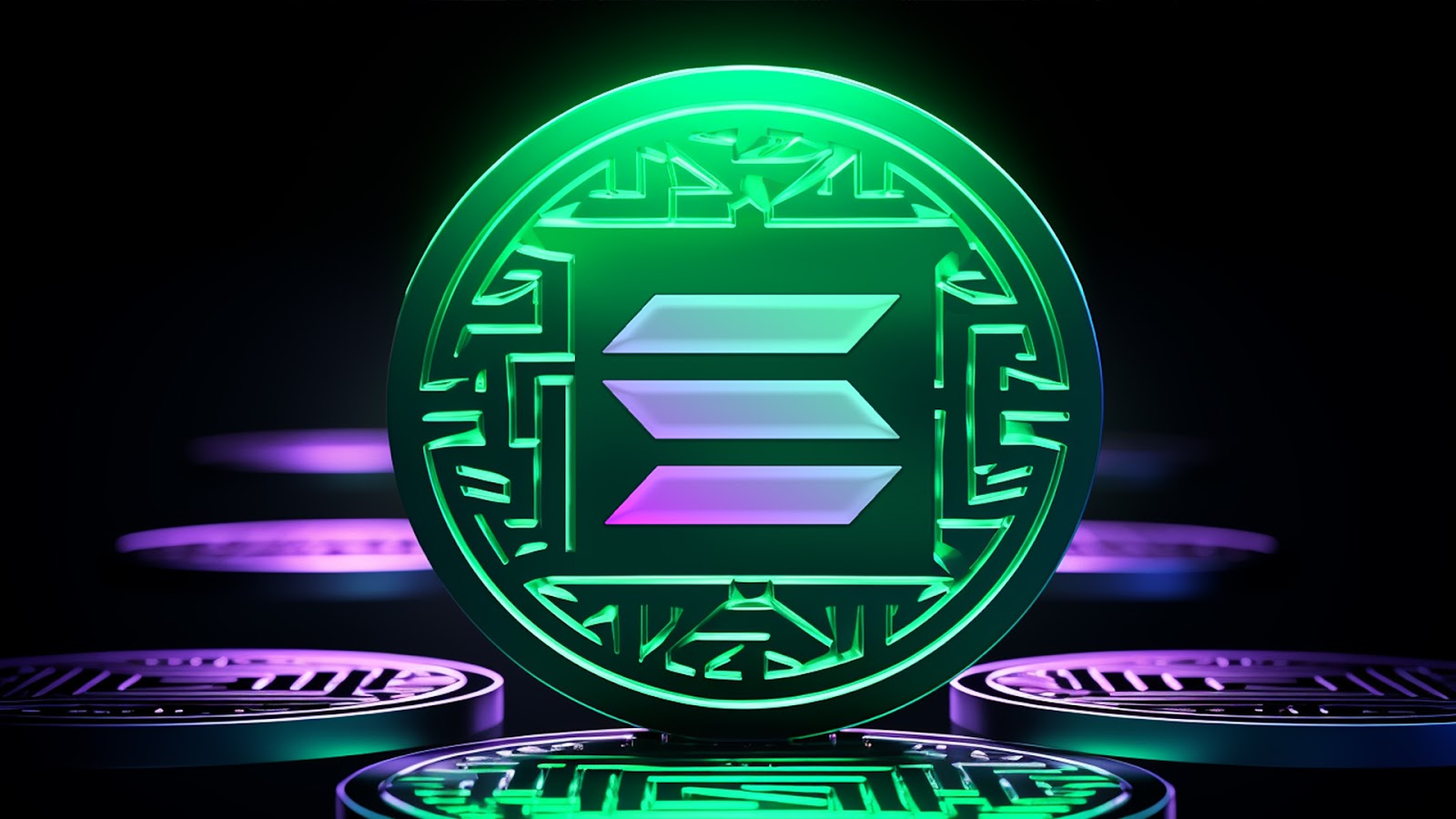
Since ‘The Merge’ in September 2022, the answer to ‘how do you stake Ethereum’ (ETH) has changed thanks to the blockchain switching from Proof-of-Work (PoW) to a Proof-of-Stake (PoS) consensus mechanism.
In essence, what this means is that Ethereum staking has evolved into Ethereum 2.0 (or ETH2) staking. Here, the Ethereum Foundation coined the term ETH2 to indicate the network’s ‘consensus layer’/upgrades, whilst Ethereum 1.0 is still referred to as the ‘execution layer’ - wherein network and smart contract rules reside.
Here, it’s important to note that the full upgrade will be completed by 2023.
What is Staking on Ethereum?
As of recent years, the Ethereum network has faced new-found levels of strains, leading to a surge in transaction costs that pose significant barriers for various use cases. In part, this surge is attributable to the success of DeFi projects, as users are now willing to endure high transaction fees due to the substantial financial gains involved.
In Ethereum, transaction fees are referred to as ‘gas’ costs. Whilst supporting real Ethereum applications by helping run the entire blockchain - through means that go beyond mere transaction processing - elevated gas fees create challenges for non-financial decentralised applications (DApps) that are trying to operate on the Ethereum network.
To tackle these challenges, the Ethereum Foundation is actively engaged in a network upgrade - previously known as ETH2 - aimed at enhancing the security, speed, efficiency, and scalability of the Ethereum network. This upgrade seeks to boost the network's capacity for processing transactions, easing bottlenecks, and broadening its applicability (especially in non-financial domains).
As mentioned earlier, this upgrade involves transitioning from Ethereum's current mining process to a staking model. In PoS blockchains, staking involves actively participating in transaction validation, akin to traditional mining. Individuals with the minimum required cryptocurrency balance can validate transactions and earn staking rewards. Major cryptocurrency exchanges such as Coinbase, Binance, and Kraken allow users to stake Ethereum.
While Ethereum presently handles 15 transactions per second - a relatively sluggish pace for financial transactions - the shift to PoS is anticipated to boost this capacity to 100,000 transactions per second. This substantial increase opens up possibilities for a wider array of projects and applications on the Ethereum blockchain.
This guide aims to acquaint you with ETH staking, providing insights into answers to the question ‘how do you stake Ethereum’, the mechanics of Ethereum staking, and the rewards associated with ETH 2.0 staking.
How Ethereum Staking Works
In contrast to PoW blockchains, the PoS blockchain operates by grouping 32 transaction blocks into rounds of validation, lasting approximately 6.4 minutes (known as ‘epochs’). The blockchain achieves irreversibility after adding two consecutive epochs, signifying that an epoch is finalised.
Here, Ethereum’s Beacon Chain organises stakers into committees of 128 members and randomly assigns them to specific shard blocks. Each committee is designated a slot and a specific timeframe to propose and validate a new block's internal transactions. With 32 slots per epoch, the validation process necessitates 32 sets of committees.
Once a committee is assigned to a block, a randomly chosen member holds the exclusive authority to propose a new block, while the remaining 127 members vote on the proposal and validate the transactions.
From here, the Beacon Chain actively collects state information from shards and disseminates it among neighbouring shards to maintain network synchronisation. Managing validators comprehensively, it then oversees everything from registering stake contributions to administering rewards and penalties. Such process involves sharding, which is a process that involves dividing the Ethereum network into multiple segments called 'shards’ - each with its distinct state comprising unique account balances and smart contracts.
Upon reaching a majority of committee attestations, a new block is added to the blockchain, and a ‘cross-link’ is generated to authenticate its inclusion. The staker proposing the block only receives their reward after this confirmation. During the cross-linking process, individual shard states are reconciled with the main chain - i.e. the Beacon Chain. In turn, this ensures that the final state of each shard is reflected on the Beacon Chain.
Finality - which denotes the inability to change a block in a distributed network - is achieved through Casper, a finality protocol in PoS. Here validators collectively agree on the block's state at specific checkpoints, and the block is deemed finalised when two-thirds of the validators concur. Attempting a reversal through a 51% attack later would result in validators losing their entire stake.
How Do You Stake Ethereum?
Participating in Ethereum staking involves several approaches, with custodial staking systems being a convenient option. In this setup, the entire staking process is managed on your behalf.
By depositing ETH, the staking provider establishes and oversees the node - therefore eliminating the need for your direct involvement. However, a key distinction is that you relinquish control of the validator node's private key, with the staking provider assuming responsibility for managing your assets…and therefore they receive a share of your rewards for their services.
For those preferring a more hands-on approach, setting up a staking node on the new Ethereum network entails using both Ethereum 1.0 and Ethereum 2.0 clients. Ethereum clients act as applications facilitating communication between nodes and the Ethereum network.
To embark on this latter staking journey, users must possess a computer with sufficient memory space to download both Ethereum blockchains (i.e. the existing and emerging Ethereum 2.0). Given that Ethereum 1.0 already encompasses about 900 terabytes of data - expanding at a daily rate of approximately 1 gigabyte - substantial storage is essential here. Additionally, validators must also maintain constant connectivity to the blockchain, necessitating a reliable internet connection.
Once the validator software is installed, a minimum of 32 ETH must be sent to the Ethereum staking contract address. This process involves generating two keys - one for signing and validating transaction blocks and another for withdrawing funds. And in wake of ‘The Merge’ in 2022, you can also create your own withdrawal key.
Before sending funds to the staking contract address, users must visit the ETH 2.0 launchpad and follow the prescribed procedures. This payment not only establishes your eligibility as a validator but also serves as a mechanism for the network to penalise rogue validators intentionally or unintentionally compromising the authenticity of the Ethereum blockchain. In instances of inconsistent validator activity, the blockchain may ‘slash’ the staked funds of the culprits.
The intentional violation of network rules by an Ethereum 2.0 validator resulting in removal is termed ‘slashing’. This incurs a penalty, with a portion or the entire staked 32 ETH sum being withdrawn. Offline validator nodes are also penalised in order to incentivise their consistent connection to the network. Every epoch, lasting approximately six and a half minutes, both penalties and incentives are issued by the protocol.
Why Should I Stake Ethereum?
The reward for Ethereum stakers is influenced by the total ETH investment and the number of validators in the network. As the staked ETH pool decreases, the annual interest rate increases. Conversely, interest rates decline when the staker pool grows sufficiently to support a decentralised ecosystem.
Staking Ethereum is a favourable choice because it simplifies running a node without significant investments in hardware or energy. Additionally, individuals with insufficient ETH for solo staking can participate in staking pools.
Additionally, the staking process promotes decentralisation and encourages broad participation from ETH holders. Unlike mining, having more nodes does not proportionally increase profits. Instead, staking facilitates secure sharding, which enables Ethereum to construct multiple blocks simultaneously, thereby expediting transaction processing.
And finally, post ‘The Merge’ Ethereum staking is eco-friendly through sharding being able to reduce the power required to compromise a segment of the network.
How Do You Stake Ethereum - FAQ
How much do you make staking Ethereum?
The current anticipated reward rate for Ethereum stands at 3.30%. In practical terms, this implies that, on average, Ethereum stakers can expect to earn approximately 3.30% if they maintain their asset holdings for a full year.
As of December 2023, the reward rate for Ethereum remained consistent at 3.30%. Looking back into November, the reward rate for Ethereum was slightly lower, recorded at 3.14%.
Is Ethereum good for staking?
Staking Ethereum is advisable due to the ease of running a node, which doesn't require substantial investments in hardware or energy. Additionally, individuals with insufficient ETH for solo staking can participate in staking pools. This approach fosters a more decentralised staking process, enhancing accessibility and participation in the network.
Can I lose my ETH if I stake it?
Opting to stake ETH 2.0 carries the risk of losing a portion or the entirety of your staked assets. In the event that you're running a node and it is offline when called upon for staking, the Ethereum network may penalise you by deducting a portion of your staked ETH.
Why is staking ETH risky?
One crucial risk to consider when engaging in ETH staking is the potential loss of staked assets through slashing. Slashing represents a protocol-level penalty linked to failures within the network or validator, posing a threat to the staked assets.
How often do you get paid for staking ETH?
Staking rewards are distributed every few days, and the amount is directly proportional to the value that is staked. In other words, the more you stake, the higher your earnings.
Want More Cutting-Edge Crypto News?
Follow Us: X TikTok Instagram Telegram LinkedIn
Sign up to our newsletter at the bottom of the page
Check Out Our Top 10 Crypto Currencies of 2023
This article is intended for educational purposes and is not financial advice.

















